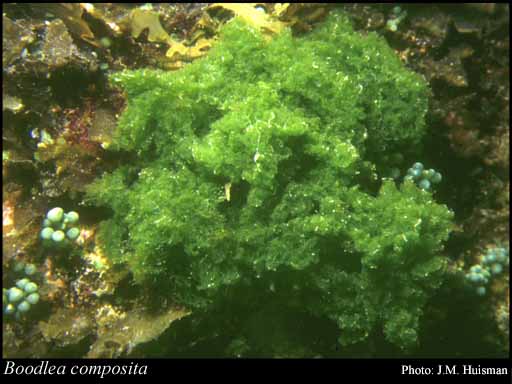- Reference
- Beih.Bot.Centralbl. Abt. 1, 18:187 (1904)
- Conservation Code
- Not threatened
- Naturalised Status
- Native to Western Australia
- Name Status
- Current

Scientific Description
Habit and structure. Thallus green, crisp, spongiose, to 6 cm tall and spreading laterally to a similar extent. Structure of loosely entangled filaments, these initially producing opposite branches at each node and generally additional third and fourth branches perpendicular to the first pair. Intercalary cell divisions often present. Filaments infrequently forming secondary attachments to adjacent cells by terminal or subterminal tenacular cells. Cells of major axes 150–350 µm in diameter, branches 70–125 µm in diameter, narrower at apices.
Distribution. Known from tropical and subtropical Indo-Pacific. In Australia from the Houtman Abrolhos, W. Aust., around northern Australia to the Great Barrier Reef, Qld., and Lord Howe I. , N.S.W.
Habitat. Generally epilithic in the intertidal and shallow subtidal.
Distribution
- IBRA Regions
- Carnarvon, Dampierland, Pilbara.
- IBRA Subregions
- Cape Range, Pindanland, Roebourne.
- IMCRA Regions
- Abrolhos Islands, Kimberley, Ningaloo, North West Shelf, Pilbara (nearshore), Pilbara (offshore).
- Local Government Areas (LGAs)
- Ashburton, Broome, Carnarvon, Cocos Islands, Derby-West Kimberley, Exmouth, Greater Geraldton, Karratha, Wyndham-East Kimberley.